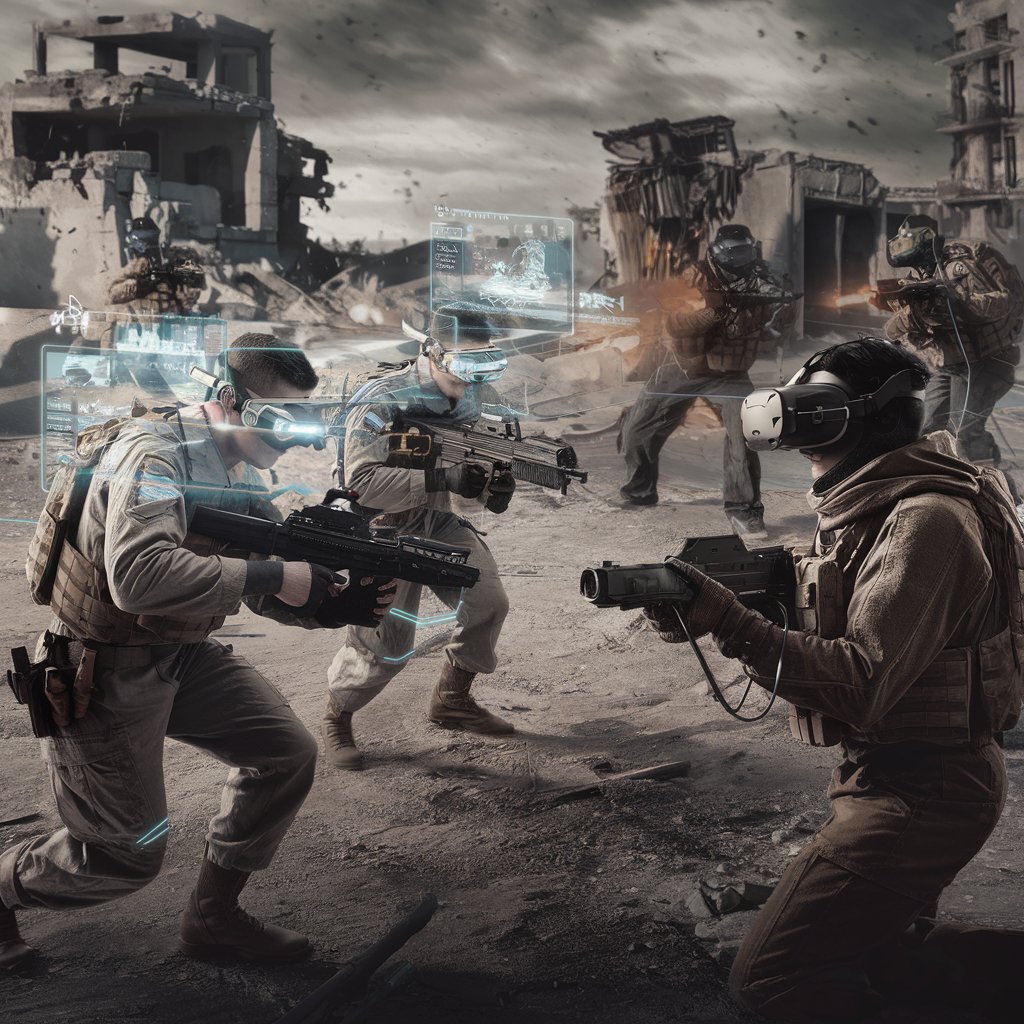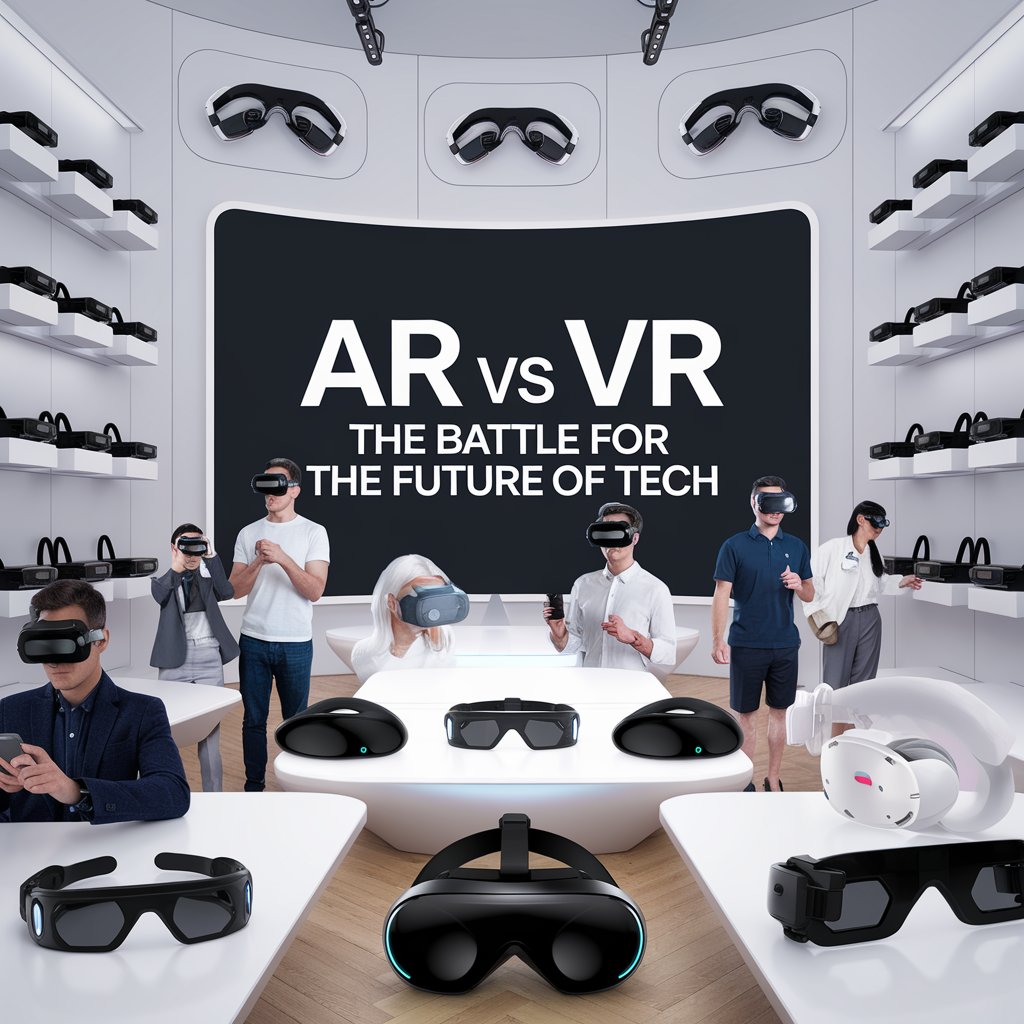What is AR (Augmented Reality)?
Augmented Reality (AR) is a technology that overlays digital information onto the real world, enhancing what we see and experience with computer-generated images, sounds, or data. Unlike Virtual Reality, which creates a completely artificial environment, AR integrates digital elements with the user’s real-world environment.
One of the most well-known examples of AR is Pokémon Go, a mobile game that uses AR to display digital Pokémon characters in real-world locations. AR is also used in apps like Snapchat for filters and effects, as well as in Google Maps for navigation, where it overlays directions on real-world streets through your smartphone camera.
What is VR (Virtual Reality)?
Virtual Reality (VR), on the other hand, immerses users in a completely digital environment, cutting off their interaction with the real world. When wearing a VR headset, users are transported into a simulated reality where they can explore virtual worlds, interact with digital objects, and experience scenarios that are either fictional or modeled after real-life places.
VR has become especially popular in gaming and entertainment, with systems like the Oculus Rift and PlayStation VR offering fully immersive gaming experiences. VR also plays a significant role in training simulations, allowing users to practice tasks like flying a plane or performing surgery in a risk-free virtual environment.
The Evolution of AR and VR Technologies
Both AR and VR have evolved significantly over the last few decades. VR first gained attention in the 1990s with the introduction of bulky, expensive systems that offered limited capabilities. AR, by contrast, didn’t gain mainstream attention until the 2010s when smartphones became capable of handling AR applications.
Key milestones include the launch of the Oculus Rift in 2012, which revitalized interest in VR, and Pokémon Go in 2016, which introduced AR to a global audience through gaming. Since then, both technologies have continued to develop rapidly, with improvements in hardware, software, and user experiences.

How AR Works
Augmented Reality relies on a combination of cameras, sensors, and display technologies to blend digital elements with the real world. AR systems often use your smartphone or a dedicated device like AR glasses to project images or data onto real-world objects. AR can be as simple as adding a digital label to a product or as complex as overlaying a 3D model of a building on a construction site for architects to examine.
Popular uses of AR include:
- Navigation Apps like Google Maps, which project real-time directions onto your screen.
- Retail Apps, where customers can visualize how a piece of furniture will look in their home before buying.
How VR Works
Virtual Reality systems use headsets equipped with screens that cover your field of vision, motion sensors to track your movements, and sometimes handheld controllers to interact with the virtual world. Unlike AR, VR completely replaces your real-world surroundings with a digital environment, offering a fully immersive experience.
Some popular VR applications include:
- Gaming, where VR transports players into fully immersive worlds like in Half-Life: Alyx.
- Training Simulations, where industries like aviation, medicine, and the military use VR to simulate high-risk scenarios for safe practice.
Differences Between AR and VR
While AR enhances the real world by adding digital elements, VR creates an entirely separate, immersive reality. This fundamental difference impacts how each technology is used:
- AR: Designed for enhancing real-world tasks, often through smartphones or AR glasses. It’s more accessible and practical for everyday use, such as navigation, gaming, or retail.
- VR: Offers complete immersion in a digital world and requires more specialized equipment like headsets. It’s particularly effective for gaming, training, and entertainment but less integrated into daily life.
AR in Entertainment and Gaming
AR has made a huge splash in gaming, with Pokémon Go being a prime example. By combining AR with location-based technology, the game allows users to interact with virtual characters in their real-world environment. AR is also used in entertainment to provide interactive experiences in museums, theme parks, and live events.
VR in Entertainment and Gaming
VR, however, takes gaming to another level by placing players in fully interactive, digital worlds. Games like Beat Saber and The Walking Dead: Saints & Sinners offer immersive experiences where players can physically interact with the environment. VR is also used in the entertainment industry for virtual concerts, movies, and social experiences, creating entirely new ways to engage audiences.
AR in Business and Industry
Beyond gaming, AR has found significant applications in business and industry. In retail, AR allows customers to visualize products in their home before purchasing. In manufacturing, AR helps workers visualize complex machinery, making maintenance and repairs easier. AR is also used in real estate, where potential buyers can take virtual tours of properties without setting foot inside.
VR in Business and Industry
VR has equally promising applications in business, especially in training and collaboration. Industries like aviation and healthcare use VR to simulate high-risk environments where employees can train without real-world consequences. In the corporate world, VR is being used for virtual meetings, allowing teams from around the world to collaborate in a shared virtual space.
AR and VR in Healthcare
Both AR and VR are transforming healthcare. AR is being used to enhance surgeries, overlaying important data onto the real world to assist surgeons during procedures. It’s also used in medical training, where students can visualize and interact with 3D models of human anatomy.
VR is being used for therapy, particularly for treating PTSD and phobias, by allowing patients to confront and manage their fears in a controlled environment. VR is also used for pain management, providing a distraction for patients undergoing painful treatments like chemotherapy.

Challenges Facing AR and VR Technologies
Despite their potential, both AR and VR face significant challenges. For AR, the key obstacles are hardware limitations and battery life, especially for devices like AR glasses. VR faces issues with motion sickness, high costs, and the challenge of creating truly immersive content.
Both technologies also struggle with market adoption. While AR is more accessible due to its integration with smartphones, VR requires expensive headsets, limiting its widespread use.
The Future of AR
The future of AR is promising, particularly with the rise of AR glasses and other wearable devices. As these devices become more advanced and less intrusive, AR could transform industries ranging from retail to education. Imagine a world where AR glasses provide real-time information, from traffic updates to product reviews, directly in your field of vision.
The Future of VR
VR’s future lies in creating even more immersive virtual worlds. As hardware improves and becomes more affordable, VR could revolutionize not just entertainment, but also social interaction, education, and even mental health care. Fully immersive VR worlds, where people can work, play, and socialize, may become a reality in the near future.
Outline:
- Introduction
- Overview of AR (Augmented Reality) and VR (Virtual Reality)
- The growing importance of AR and VR in technology
- What is AR (Augmented Reality)?
- Definition and key features of AR
- Real-world examples of AR in use
- What is VR (Virtual Reality)?
- Definition and key features of VR
- Real-world examples of VR in use
- The Evolution of AR and VR Technologies
- A brief history of AR and VR
- Key milestones in the development of both technologies
- How AR Works
- The role of cameras, sensors, and display technologies in AR
- Examples of AR applications in daily life
- How VR Works
- The role of headsets, motion tracking, and controllers in VR
- VR’s immersion factor and key applications
- Differences Between AR and VR
- Comparison of user experience, hardware, and potential use cases
- How each technology interacts with the real world
- AR in Entertainment and Gaming
- How AR is changing the way we play games and experience media
- Examples of AR in popular games like Pokémon Go
- VR in Entertainment and Gaming
- VR’s role in creating fully immersive gaming environments
- VR’s use in films, live events, and interactive storytelling
- AR in Business and Industry
- How AR is used in industries like retail, real estate, and manufacturing
- The impact of AR on product design and customer experience
- VR in Business and Industry
- VR’s applications in training, simulations, and remote work
- How businesses are leveraging VR for team collaboration and product development
- AR and VR in Healthcare
- How AR is used for medical training and enhancing surgeries
- The role of VR in therapy, pain management, and medical training
- Challenges Facing AR and VR Technologies
- Technical challenges, including hardware limitations and user comfort
- Adoption hurdles and market readiness
- The Future of AR
- Predictions for the growth and evolution of AR in the next decade
- How AR could transform consumer experiences and industries
- The Future of VR
- Predictions for VR’s impact on entertainment, education, and social interaction
- The potential for fully immersive virtual worlds in the future

Introduction
Augmented Reality (AR) and Virtual Reality (VR) have been hot topics in tech for years, but they are now closer than ever to transforming the way we interact with the world. From gaming and entertainment to healthcare and business, both AR and VR are finding their places in modern society. But which one will dominate in the future? In this article, we’ll explore the differences, applications, and potential futures of AR and VR to understand which technology could have the bigger impact.
Conclusion
While both AR and VR are poised to shape the future of tech, they cater to different needs. AR enhances the real world, making it a practical tool for everyday applications, while VR offers complete immersion, perfect for gaming, entertainment, and specialized training. The battle between AR and VR isn’t about which technology will win—it’s about how each will carve its place in shaping the future of how we live, work, and play.
FAQs
- What is the main difference between AR and VR?
AR adds digital elements to the real world, while VR creates a completely immersive digital environment. - Which is better for gaming: AR or VR?
It depends on the experience you want. AR integrates with the real world, while VR offers full immersion. - How is AR used in business?
AR is used in retail for virtual product visualization, in manufacturing for equipment maintenance, and in real estate for virtual property tours. - Is VR only for entertainment?
No, VR is widely used in business, healthcare, education, and training for immersive simulations and remote collaboration.
